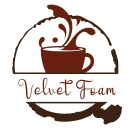French Press vs Espresso
Strong, dark, and fragrant. Three things that distinguish an energizing cup of coffee from the tepid, freeze-dried, instant kind. French press and espresso, are two of the oldest and fundamental coffee brewing methods and form the basis/core of most coffee-variants.
Which method you choose to brew your morning cuppa would depend on your budget and how much time you want to invest. Both can be used in the comfort of your home to produce the perfect cup of coffee to start your day with.
Take the plunge…with a French press
The humble French press, though originally is Italian, has many names; press pot, coffee plunger, coffee press. It is extremely portable with a narrow cylindrical carafe (beaker) and a plunger. The beaker might be made of glass, plastic, stainless steel, or stoneware. Place the coffee grounds into the carafe and add the desired amount of hot water. Stir with a spoon to make sure that the coffee grounds are properly immersed and let it steep.
The longer the grounds steep, the stronger the brew. Gently plunge the plunger all the way down to ensure that the coffee doesn’t brew into over-extraction. The spent grounds will collect at the bottom while the coffee liquid emerges to the top above the plunger’s mesh filter.
The ratio of the coffee grounds and water used for a French press will vary depending on the roast of the beans, how strong you like your coffee, how long you steep it. But, a ratio of 1:15 of coffee to water produces a subtle, aromatic brew.
Espresso… expensive countertop to simple stovetop
If you don’t have the budget for a fancy (and frankly expensive) espresso machine, small stovetop espresso pots that brew 2 to 3 cups of potent coffee are readily available. Compactly designed with two detachable halves, they are extremely easy to use. You need to add water to the bottom half, add ground coffee to the funnel-like attachment and let it brew for a few minutes on medium flame. The fragrant coffee will rise to the top half of the pot, ready to be served into a cup.
Fill the bottom chamber with water, whether cold or hot is up to you, it doesn’t make much of a difference to either the taste or the speed. Add ground coffee to the funnel-like filter. Place the coffee-filled filter into the bottom chamber and secure it with the top chamber. Seal the two chambers firmly to avoid leakage and place the pot on a medium flame.
You’ll know when the coffee is done brewing, as it will collect in the top chamber. Take the pot off the heat and serve yourself a delicious cup of java.
You could also consider a simple espresso bean grinder with this method and avoid any big expenditures.
French press vs Espresso
Both methods produce fragrant caffeine-rich brews but each has its pros and cons
Time is of the essence
A French press is quicker than an espresso, by virtue of the simple fact that you are adding hot water to the grounds in a French press. However, for a stovetop espresso pot, you are letting the water boil on the flame and then brew the grounds.
Strength of the brew
Espresso brews are stronger, more caffeine-rich than French press coffee which is lighter and subtler. You can steep the grounds for longer in the French press to enhance the flavor though it won’t be as robust as of an espresso.
One cup or more?!
Espresso machines (stovetop or countertop) produces at the most 2 to 3 cups of aromatic, strong coffee. However, when you are entertaining friends or need to make more 5 to 6 cups, it can get a bit tedious. As diluting an espresso shot is rather pointless, a French press is essential when making large amounts of coffee. Depending on the volume of the carafe, a French press can make up to 10 to 12 cups of coffee in a single go.
Coarse or fine ground?
Coarser grounds of coffee are better suited for a French press than fine grounds as they might run through the mesh filter of the plunger and seep into the coffee. An espresso has no such issues and all kinds of grounds are well suited for it.
Whether you choose a French press or an Espresso would depend highly on your lifestyle and coffee needs. The result of both deserves to be savored and as any coffee lover will tell you, one of each is a fairly good investment in the long run. They serve different needs, tastes, and moods.
